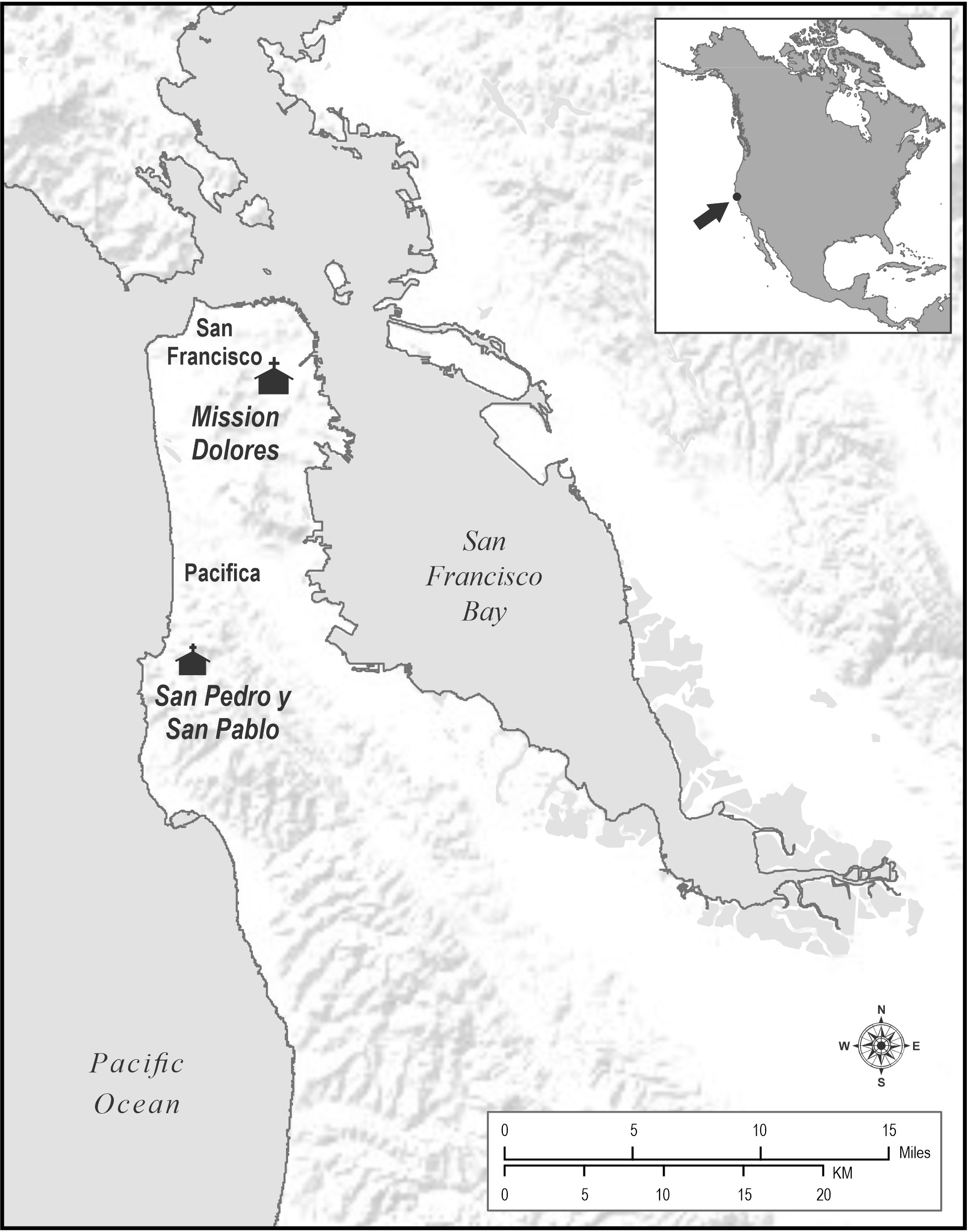Native Americans living in coastal Northern California during the Mission era were presumed to experience high rates of disease and stress.
Not until now, however, did scientists have hard evidence of their health issues, according to new research conducted in cooperation with Native descendants. A new way of looking at tooth enamel could give scientists a path to deeper understanding of the health of human populations — from the ancient to the modern. It is believed to be the first research of its kind.
A paper, published today in the Journal of Archaeological Science, examines two proteins found in human teeth: immunoglobulin G, an antibody that fights infection, and C-reactive protein, which is present during inflammation in the body.
“It’s heartbreaking to think about children who may have lost their parents and family to disease, were thrown into a new cultural environment in the mission they didn’t understand, and how it affected their well-being.” — Jelmer Eerkens, UC Davis
“These proteins are present in tooth enamel, and they are something we can use to study the biological and potentially the emotional health of past human populations,” said Tammy Buonasera, an assistant professor at the University of Alaska Fairbanks and lead author of the paper. She conducted the research while a research associate at University of California, Davis, and wrote the paper at UAF.
“We see certain individuals, especially children, with very high levels these proteins, which people produce when they are under stress,” said Jelmer Eerkens, UC Davis professor of anthropology and one of the corresponding authors on the paper. “It’s heartbreaking to think about children who may have lost their parents and family to disease, were thrown into a new cultural environment in the mission they didn’t understand, and how it affected their well-being.”

Researchers from both universities said the paper provides an important foundation for ongoing work in their labs at UAF and UC Davis.
While tooth enamel has been useful for scientists in recent years in determining the sex of individuals, this current research goes beyond the sex determination to look at serum proteins located in enamel in teeth. While morphological alterations to bones and teeth can inform about past diseases and injuries, many illnesses do not leave a visible trace on other parts of a skeleton. Tooth enamel analysis offers more detail, researchers said.
Researching health in consultation with Native descendants
Analyses of dental enamel were performed on 12 Mission-period ancestral Ohlone individuals interred at San Pedro y San Pablo Asistencia, commonly known as the Sanchez Adobe in Pacifica. The location was founded by the Spanish in 1786 to supply food to Mission Dolores in San Francisco.
The skeletons were inadvertently discovered during construction in the area in 2018, researchers said, and provided an opportunity — in consultation with and with permission from tribal descendants — to look at health conditions at or near the Asistencia.
Researchers then compared the enamel to 19th century historic samples from City Cemetery in San Francisco as well as in molars extracted from healthy military cadets from the United States Air Force Academy between 2005 and 2006.
“We felt it was important to share this knowledge with the public to help keep them in our collective memories.” — Amah Mutsun Tribal Band of Mission San Juan Bautista, California, as the state-appointed Most Likely Descendants for the de San Pedro y San Pablo Asistencia, commonly known as the Sanchez Adobe, Pacifica, California.
The research team then cross-referenced the levels of the two proteins with the known history and experiences of each of the populations. Native peoples in the California Mission system experienced high rates of mortality, intense stress and introduced infectious diseases. European settlers from the 1800s had shorter lifespans than present-day populations but, as a group, were assumed to have experienced lower degrees of stress and disease than the Ohlone group.
The research will be used in a forthcoming book, for which tribal descendants wrote an introduction:
“While we understand that the study of ancestral remains can raise ethical and emotional issues, we felt that their inadvertent disturbance offered a unique opportunity to know more about their lives,” the introduction reads.
“We felt it was important to share this knowledge with the public to help keep them in our collective memories.” — Amah Mutsun Tribal Band of Mission San Juan Bautista, California, as the state-appointed Most Likely Descendants for the de San Pedro y San Pablo Asistencia, commonly known as the Sanchez Adobe, Pacifica, California.
Media Resources
Media contacts:
- Marmian Grimes, UAF, 907-474-7902, mlgrimes@alaska.edu
- Karen Nikos-Rose, UC Davis, 530-752-6101, kmnikos@ucdavis.edu
Images available here: https://ucdavis.box.com/s/fj2dnn4utdksd02gom1t36kj40biy9mf
Related UC Davis research on tooth enamel: https://www.ucdavis.edu/curiosity/news/archaeologists-use-tooth-enamel-protein-show-sex-human-remains.
